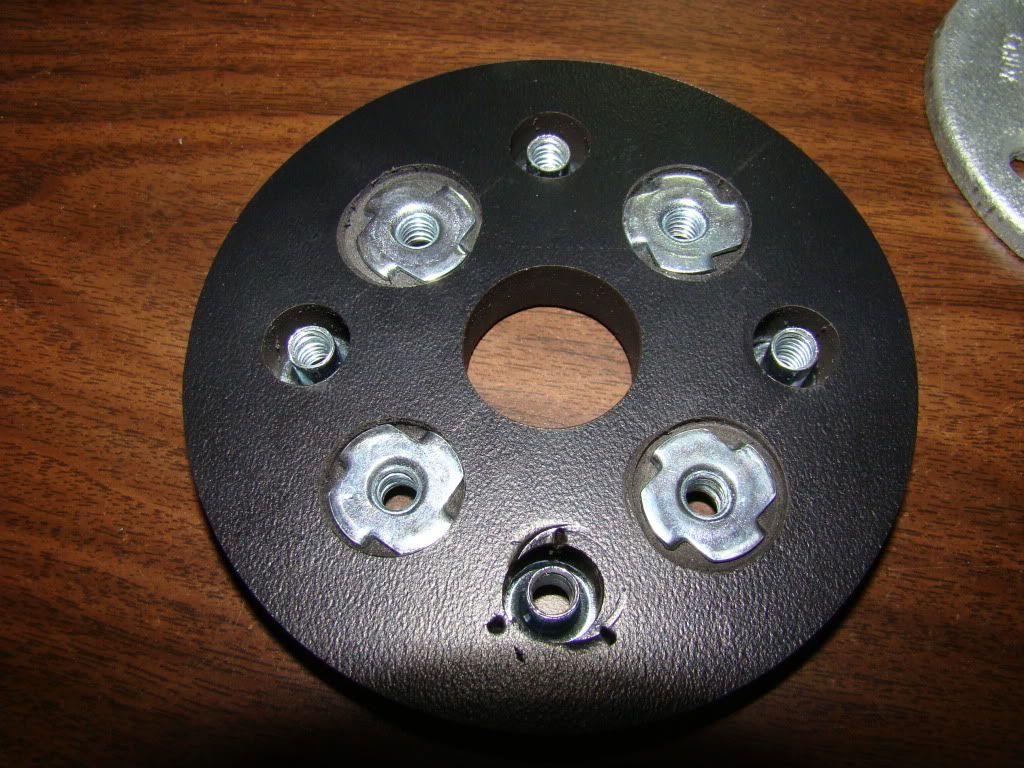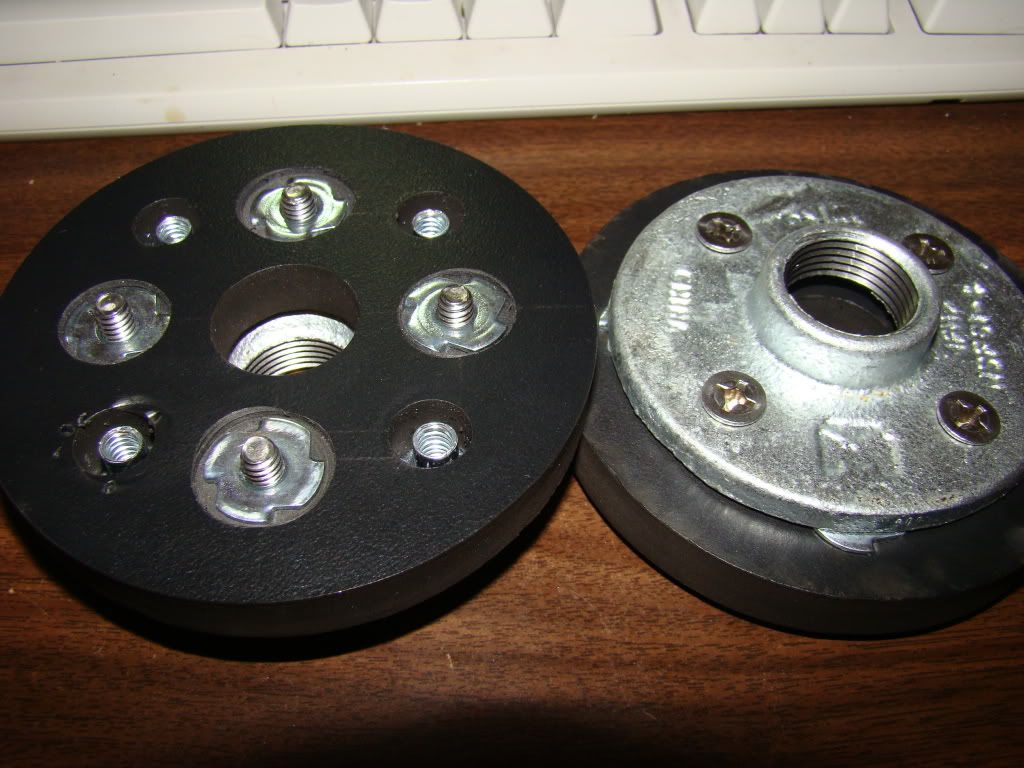In order for this post to make any sense about how the LPJT will work, you might need to read the previous post first, to see how my shoulders work. I'll wait while you do that :)
Well, right now my plan is to have 1 pipe (3/4") between the shoulders, instead of trying to find the 1" pipe and the 3/4" pipe to fit inside it.
Here's what I have so far:
I took the inside circles that already had T-nuts (which hold the legs onto the body) and added new holes for another set of T-nuts, like so:

The new set of T-nuts will come from the other side. In order for the leg to still rotate smoothly when the bolts are loosened, I had to countersink the new T-nuts with a handy-dandy new 3/4" Forstner bit:

The trick is that now that the T-nuts are facing opposite directions, the legs will bolt into one side, and the flange is bolted onto the other side, facing into the frame. Here's a front and back shot:

If I find out why 1 pipe doesn't work for everyone else (the hard way, I guess) I should be able to swap out one of the flanges and change it to the 2 pipe type. I do still have 2 more of the round thingies in case I really messed this up or something...
The pipe i plan on buying is 18" long. Right now my best calculation is that I won't need to have the pipe cut, just threaded another 2 inches or so on both ends. It might be good, depends on the hubs, once I get some.
I guess the idea is that I won't ever have to remove the pipe, or the discs it's attached to either. After pondering the 2 pipe idea, all I can figure is that the pipe is attached to the legs and must have to come apart to remove the legs.
I guess the real test will be how much stress is passed to the pipe with my setup...
***Important Note: The bolts you saw sticking out of the new T-nuts in the last picture will have to be cut down about 1/4". Since you can see them sticking out, there's no way they will move smoothly when the shoulder needs to be rotated***
No comments:
Post a Comment